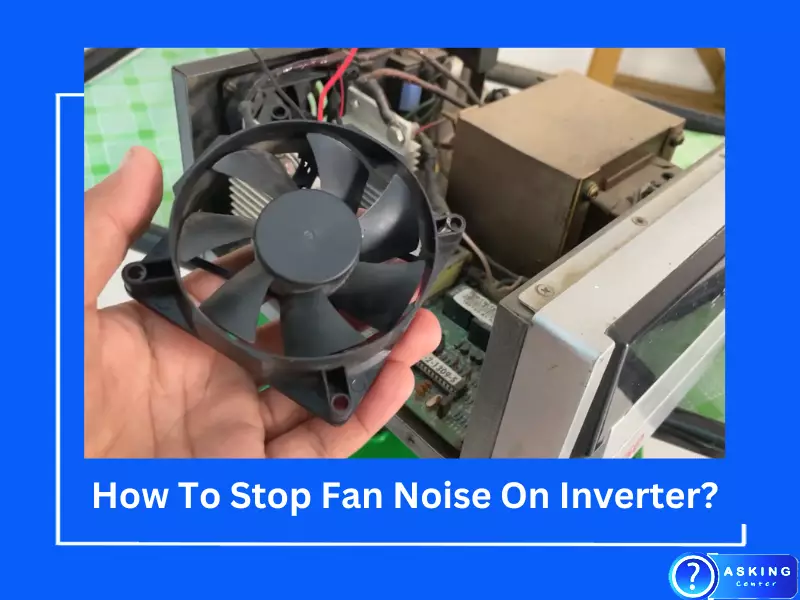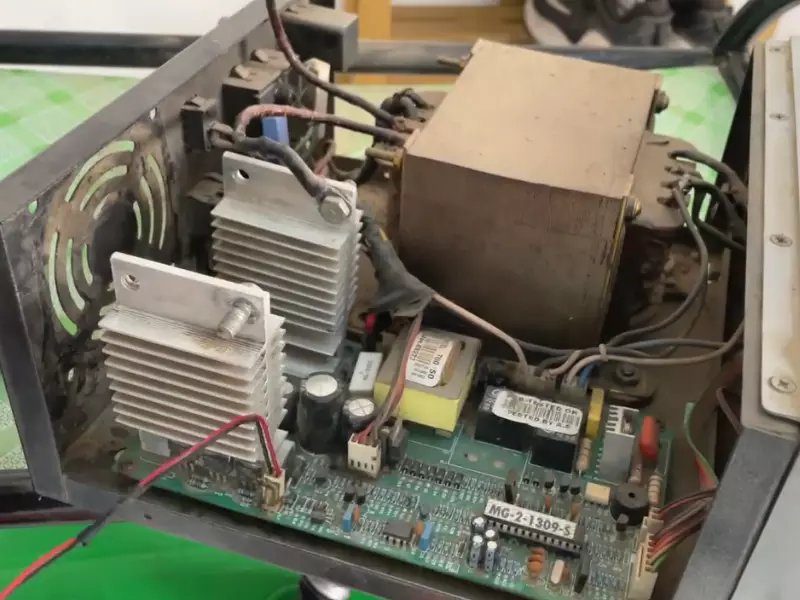The hum of a fan within an inverter isn’t an unusual sound, but when the noise level escalates to a high-pitched whir, it can be quite bothersome. An inverter, essential to modern living, is responsible for converting DC power to AC power. One of its integral components is the cooling fan, which helps prevent overheating. However, when the fan is noisy or runs continuously, it can signal a problem requiring immediate attention.
Such noise is a concern not just because of the disturbance but also because it points to a possible malfunction in the inverter’s operation. This may result in reduced efficiency, shorter lifespan, and potentially significant repair costs. By addressing this issue promptly, you not only restore calm but also ensure that your inverter functions optimally.
The fan noise might stem from various reasons, including overloading, continuous running, improper installation, or lack of maintenance. Identifying the cause and applying the appropriate solution can prevent unnecessary headaches. So, let’s dive into this comprehensive guide, providing you with helpful insights and actionable steps to stop the fan noise on your inverter effectively.
Why an Inverter Fan Runs Continuously?
The inverter fan can run continuously due to factors like overheating, high power demand, or even a defective sensor. This constant operation can strain the fan, leading to increased noise and premature wear.
Continuous fan operation can drain your inverter’s power, reduce its efficiency, and cause rapid wear and tear on the fan. Ultimately, it may lead to system failure if not addressed promptly.

Eliminating Noise From an Inverter
Techniques for Noise Elimination
Several strategies can help reduce noise from an inverter, such as isolating the inverter, using noise dampening materials, or replacing the fan. Each approach requires careful implementation to avoid affecting the inverter’s performance.
When to Call a Professional
While some noise reduction techniques can be implemented personally, there are instances when professional assistance is required, like if the noise persists after all troubleshooting or if the fan requires replacement.
The Connection Between RV Converter Fan and Inverter Fan Noise
Why Your RV Converter Fan Keeps Running
Your RV converter fan might keep running due to reasons similar to those affecting your inverter fan: high power demand, overheating, or faulty sensors. Addressing these issues will also reduce the noise from your RV converter fan.
How to Manage This Issue
Regular inspection and maintenance, replacing faulty sensors, and managing power demand can help control the fan’s continuous operation in your RV converter.
The Importance of Correct Inverter Installation
How Installation Impacts Fan Noise
Proper installation of the inverter ensures optimal air circulation, reducing overheating risk and, consequently, the fan’s need to run continuously.
Common Installation Mistakes to Avoid
Common installation mistakes include placing the inverter in high-heat areas, not providing enough ventilation, and incorrect wiring, which can all result in increased fan noise.
Inverter Maintenance and Care
Routine Checkups and Why They Matter
Routine check-ups can identify problems early, preventing issues like continuous fan operation and increased noise. It’s advised to schedule these inspections periodically with a professional.
Preventing Degradation of Fans
Regular cleaning and occasional replacement can prevent fan degradation, maintaining its efficiency and reducing noise.
The Role of AC Loading in Inverter Performance
How AC Loading Affects Fan Noise
Overloading the in verter’s AC can cause overheating, leading to increased fan operation and noise.
Strategies for Optimal AC Loading
Maintaining optimal AC loading involves using only necessary devices at a time and avoiding exceeding the inverter’s capacity. These steps can significantly reduce overheating and fan noise.

Inverter Cooling Fan Replacement
When and Why to Replace Your Inverter Cooling Fan
If your inverter cooling fan becomes excessively noisy, runs continuously, or doesn’t operate at all, it might need replacement. A worn-out fan can cause overheating and reduce the inverter’s efficiency.
Choosing the Right Fan for Your Inverter
When choosing a replacement fan, consider factors like the correct size, compatible power specifications, and noise level. A suitable fan will enhance the inverter’s performance and minimize noise.
How to Eliminate Thermal Overloading in Inverters
Understanding Thermal Overloading
Thermal overloading occurs when an inverter’s temperature rises beyond its operational limit, forcing the cooling fan to run continuously.
Tips to Prevent Thermal Overloading
Preventing thermal overloading involves maintaining optimal AC load, ensuring proper ventilation, and placing the inverter away from heat sources. Regular maintenance can also detect and address potential issues early.
Avoiding Inverter Overheating And Noisy Cooling Fans
Effects of Bad Cable Connections
Bad cable connections can lead to power loss, increased heat generation, and consequently, a noisy cooling fan. It is important to inspect and ensure secure connections regularly.
Importance of Clear Air Vents
Blocked air vents can trap heat within the inverter, forcing the fan to work harder and produce more noise. Keeping the air vents clear ensures proper ventilation and reduces the likelihood of fan noise.
Different Types of Cooling Fans in Inverters
Understanding the 3 Different Types
There are mainly three types of cooling fans used in inverters: axial fans, centrifugal fans, and cross flow fans. Each type has its benefits and is suitable for different types of inverters and operating conditions.
Which Type is Right for Your Needs
The choice of fan depends on your inverter’s specifications and the operating environment. For instance, an axial fan is suitable for conditions requiring high airflow, while a centrifugal fan is best for high-pressure systems.
Best Locations to Install Your Inverter
When choosing an installation location, consider factors like ventilation, proximity to heat sources, and the inverter’s accessibility for maintenance.
Common installation areas include utility rooms, basements, and garages. While these locations offer convenience, they also have disadvantages, like potential heat issues or limited ventilation. It’s crucial to evaluate the pros and cons before installation.
What Not to Do When Installing Your Inverter
Common mistakes when installing an inverter include not considering ventilation, installing near heat sources, and using improper or undersized cables.
These mistakes can lead to overheating, overloading, and power loss, increasing the fan’s workload and causing more noise.
FAQs
Why is my inverter fan so noisy?
The fan may become noisy due to continuous operation, overheating, improper installation, or wear and tear.
How can I reduce the noise from my inverter fan?
Noise reduction can be achieved through proper installation, regular maintenance, optimal AC loading, and in some cases, replacing the fan.
Does the location of the inverter installation affect fan noise?
Yes, installing the inverter in a well-ventilated area away from heat sources can help reduce overheating and fan noise.
Conclusion
Managing fan noise in an inverter involves a holistic approach that includes proper installation, regular maintenance, and optimal operation. Recognizing the potential causes of continuous fan operation and noise can help you preempt issues and ensure the longevity and efficiency of your inverter. With the insights provided in this guide, you now have a roadmap to a quieter and more efficient inverter.
